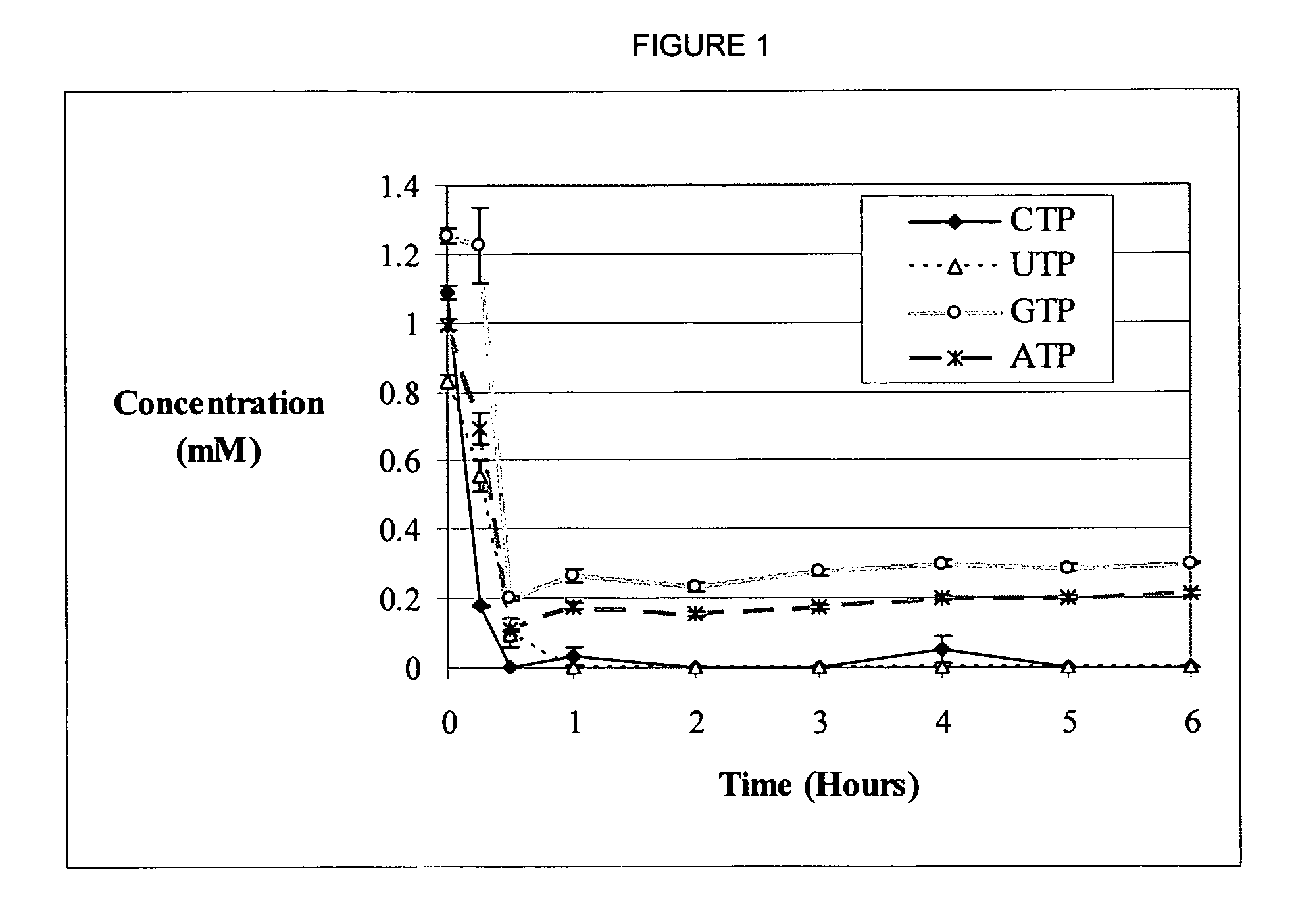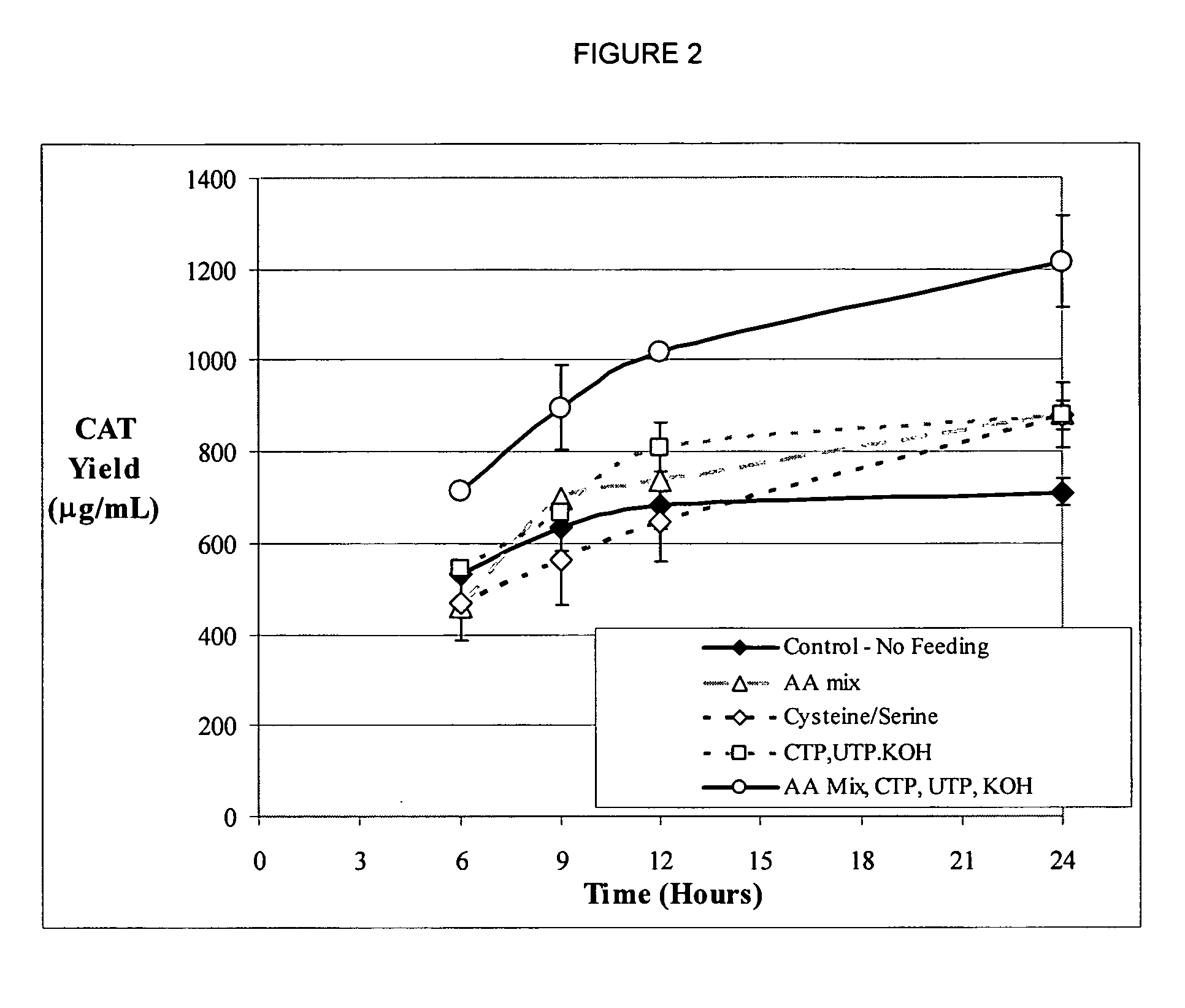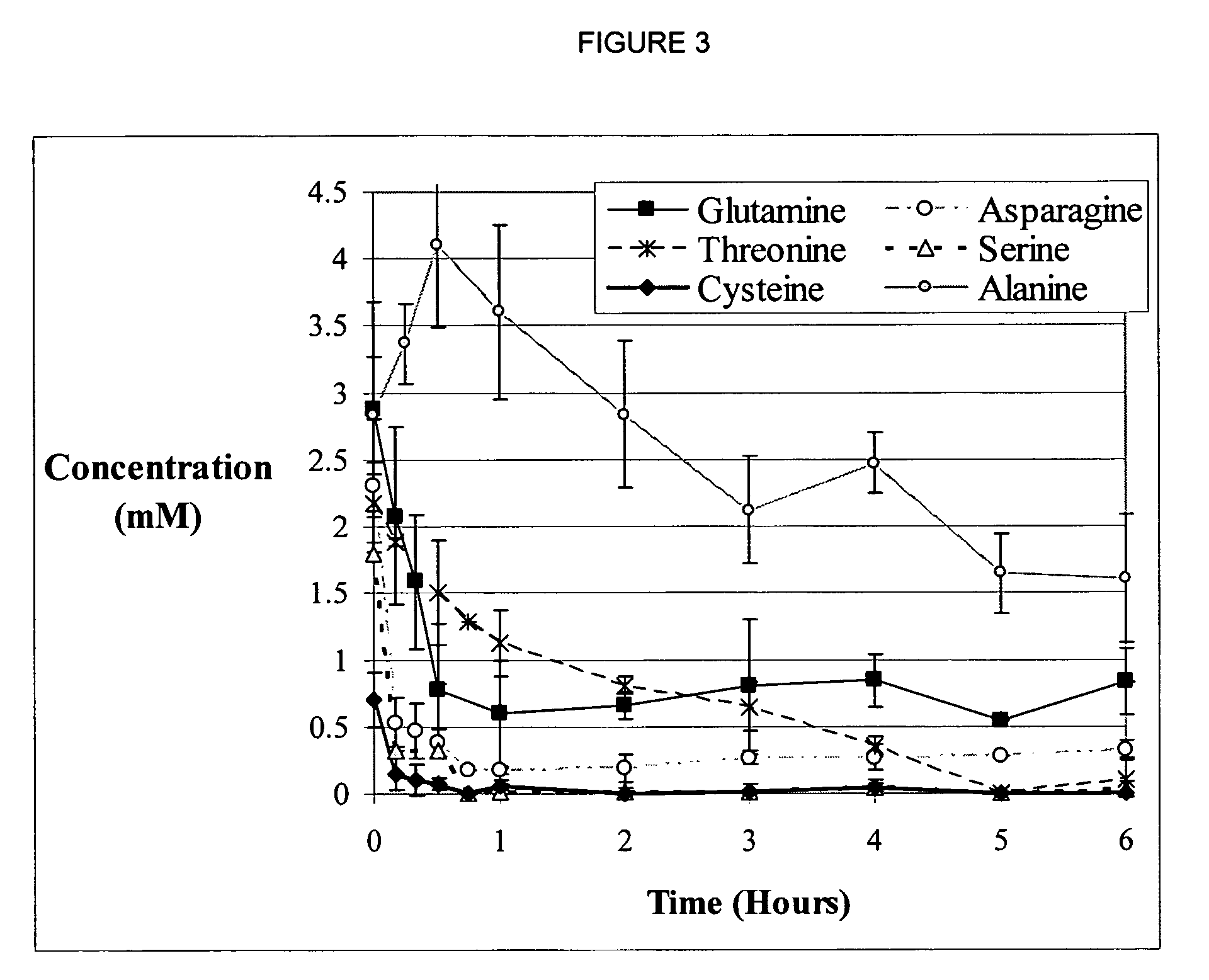Method of alleviating nucleotide limitations for in vitro protein synthesis
a nucleotide limitation and in vitro protein technology, applied in the direction of peptide/protein ingredients, immunoglobulins, peptides, etc., can solve the problems of low protein production rate, ineffective capture of nature's astounding potential, and limited approach, so as to achieve the effect of increasing the total yield of polypeptides
- Summary
- Abstract
- Description
- Claims
- Application Information
AI Technical Summary
Benefits of technology
Problems solved by technology
Method used
Image
Examples
example 1
[0047] A new substrate degradation pathway that limits in vitro protein expression is discovered, along with methods to circumvent this obstacle. Adenosine triphosphate (ATP), guanosine triphosphate (GTP), and amino acids have been previously identified as critical elements, the depletion of which leads to the termination of translation. In the case of the Cytomim system, ATP and GTP concentrations are not limiting as they remained relatively steady over the course of a protein biosynthesis reaction (shown in FIG. 1).
[0048] Strikingly, although concentrations of ATP and GTP were constant, uridine and cytidine triphosphate (UTP and CTP, respectively) were entirely depleted during the first hour of protein synthesis in vitro (shown in FIG. 1). This is the first evidence of such nucleotide degradation in cell-free protein synthesis systems. This result is especially surprising since the two other nucleotides, ATP and GTP, are present at greater than 200 μM for the majority of the reac...
PUM
| Property | Measurement | Unit |
|---|---|---|
| concentration | aaaaa | aaaaa |
| time | aaaaa | aaaaa |
| temperature | aaaaa | aaaaa |
Abstract
Description
Claims
Application Information
 Login to View More
Login to View More - R&D
- Intellectual Property
- Life Sciences
- Materials
- Tech Scout
- Unparalleled Data Quality
- Higher Quality Content
- 60% Fewer Hallucinations
Browse by: Latest US Patents, China's latest patents, Technical Efficacy Thesaurus, Application Domain, Technology Topic, Popular Technical Reports.
© 2025 PatSnap. All rights reserved.Legal|Privacy policy|Modern Slavery Act Transparency Statement|Sitemap|About US| Contact US: help@patsnap.com



